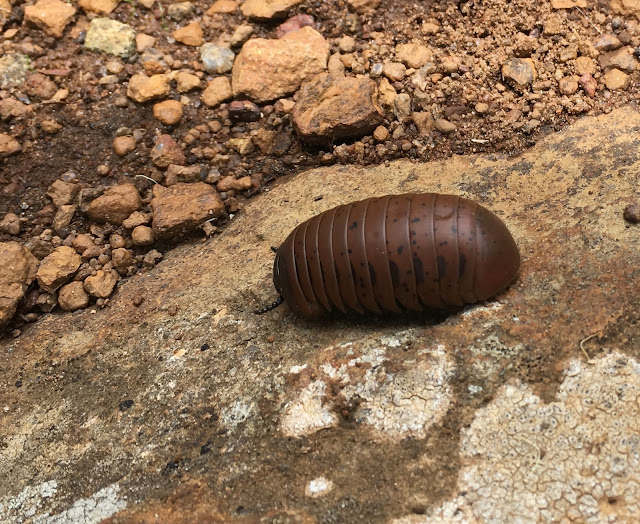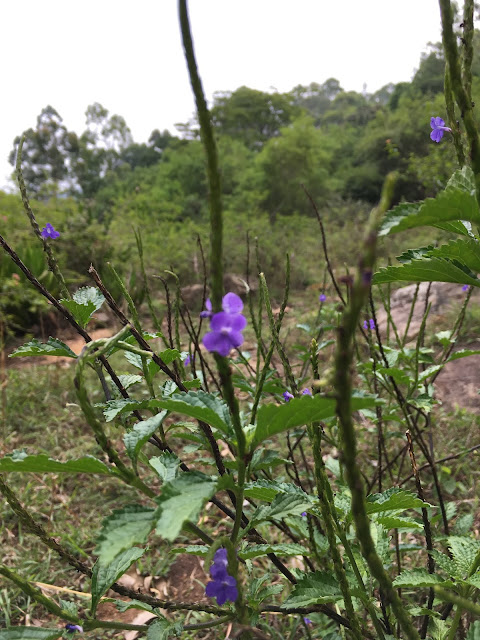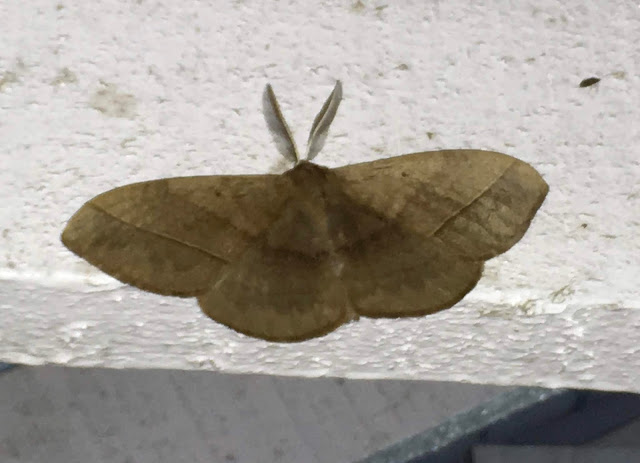June 2018
My Youreka summer. Endless stories and memories.
Plastic-free landscapes
Night skies, stars, children staring in awe
The persistent call of the Black-headed Jay
Rain. Hailstones thundering on the roof
Monkeys on the move
Mighty Trishul and Nanda Devi
Plums, pears, apricots, apples
And the oak groves.
 |
| The private estates were kept green and wooded with these Himalayan Oaks. |
 |
| Quercus leucotrichophora - the trees, their moist trunks and their canopies - were at the centre of a whole ecosystem. |
 |
| All around, any direction, would take you through these oak groves. Sometimes so silent, I would almost instinctively still my breath and tread softy. |
 |
| The paths were undisturbed carpets of oak leaves, with their characteristic serrated edges. |
 |
| And there they were on the ground as well, waiting to keep the grove replenished. Mighty oaks from little acorns grow. indeed. |
The Banjh or white oak, is abundant all through the hills of Uttarakhand at the lower levels, and is important for humans too. Its one of those trees that will withstand lopping, and branches are constantly cut for fodder, fuel and for timber it appears. The only problem this seems to create is the removal of too many acorns to allow for natural dispersion and regeneration. As a result, these groves are now under stress, (sigh!), we take away more quickly and heavily than the grove can withstand.
It seems to be that the Chir Pines are outgrowing the Oaks in Uttarakhand, and this does cause a problem for species that are dependent upon oak. From what I have read, the beautiful rufous-bellied niltava, which I saw on my first walk in the groves, is one such as is the white-throated laughing thrush, which I would hear noisily turning over the oak leaf litter, as it looked for grubs and insects.
Climbing up the hill to the top of the ridge, I arrive at a "T" point. I would come across the odd local, smiling and hurrying along as I sweated and made heavy weather of the steep slope. Reaching the T point was a relief, because from then on it was a relative walk in the park, with stone walls separating farms and views down to the valleys below. The hillside was stony here, and quite often I saw circling raptors above - once it was a magnificent Black Eagle that lazily circled, and I could see the tips of its wing feathers working like rudders, as it glided on the thermals. Another day two crested serpent eagles circled and called, as a Great Barbet hurried by, and the farm dog barked at my intrusion.
 |
| I would stand and gaze down into the valley with a tinge of sadness. Down below, the hills were completely deforested. I mused on the sustainability of this development. |
Right through my stay, I did not get a clear view, and everyone around blamed the forest fires for this. Some 2,000 hectares burned this summer, according to the government itself, so I wonder how much really was under fire, causing this level of murkiness.
I learnt that the Forest Survey of India FSI has satellite information which now allows almost real-time alerts on forest fires. And its up to the state governments to make use of this system I guess.
I digress.
I am walking up to the Siyahi Devi temple, the route all the way lined with the oak trees, and a good place to spot woodpeckers and Russet Sparrows;
The path takes me to the village, with the primary school at one end, and the temple at the other.
 |
| The Siyahi Devi hamlet, dominated by the mobile phone tower, as a result of which everyone enjoyed 4G! |
 |
| Looking down from the ridge - the haze is evident. |
 |
| The mule train taking goods up and down. |
 |
| The Primary School was in session and little toddlers were trickling in. |
 |
| Farmlands |
I did not get much of a background or history about the temple, but there seems to be one about the Devi and an eagle that is elaborated upon, in the Talking Myths website.
 |
| And no, she is not the Goddess of Ink, but rather the Royal Goddess! I loved the fact that one could wander around the temple, right into the sanctum, without being stopped by any purohit. |
 |
| Devotees offer bells when their wishes are fulfilled. |
 |
| At the north-western end of the temple is another gate, overlooking the Almora valley, and from where one can visit the Vivekananda caves and protected groves. |
 |
| Just beyond the temple gate. In the background is the town of Almora in the valley below, And the little red Shinto-like gate is the entry/exit into the beautiful wooded oak grove. |
 |
| Small mandirs dot the protected grove |
 |
| The sun was going down and the light through the trees was magical and ethereal. |
"This is the land of dreams of our forefathers, in which was born Pârvati, the Mother of India. This is the holy land where every ardent soul in India wants to come at the end of its life, and to close the last chapter of its mortal career.
This is the land which, since my very childhood, I have been dreaming of passing my life in, and as all of you are aware, I have attempted again and again to live here; and although the time was not ripe, and I had work to do and was whirled outside of this holy place, yet it is the hope of my life to end my days somewhere in this Father of Mountains where Rishis lived, where philosophy was born … I sincerely pray and hope, and almost believe, that my last days will be spent here, of all places on earth. Inhabitants of this holy land, accept my gratitude for the kind praise that has fallen from you for my little work in the West….
As peak after peak of this Father of Mountains began to appear before my sight, all the propensities to work, that ferment that had been going on in my brain for years, seemed to quiet down, and instead of talking about what had been done and what was going to be done, the mind reverted to that one theme the Himalayas always teach us, that one theme which reverberates in the very atmosphere of the place — renunciation! The Himalayas stand for that renunciation.” (Extract from: The Complete Works of Swami Vivekananda/Volume 3/Lectures from Colombo to Almora ).
It was a special place, that grove beyond the gates, and I hope I can visit again, to hear the wind whistling through the pines, the dry call of the black headed magpie, the crunch of the oak leaves under my feet.
More than anything else, I hope it remains, undisturbed and magical.


















































